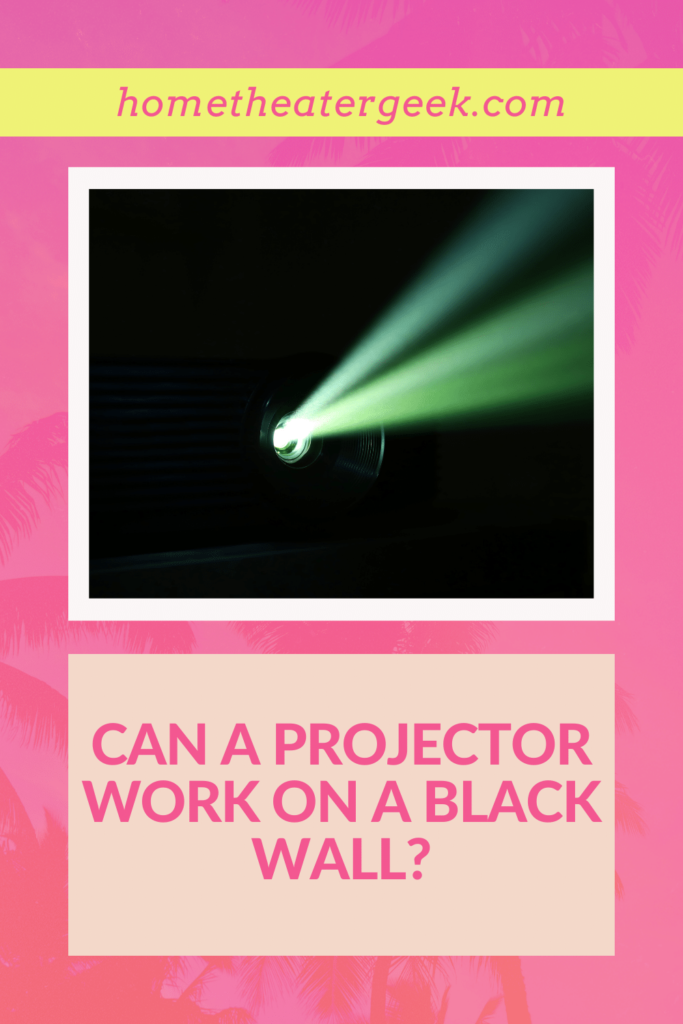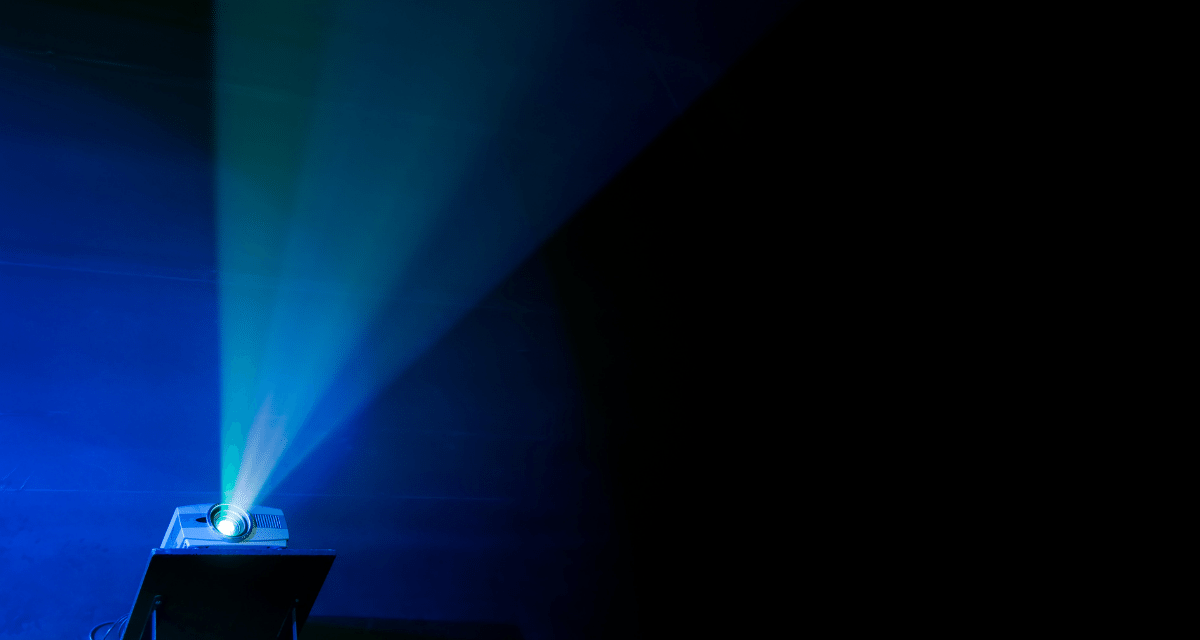We hope you love the products we recommend! Just so you know, we may collect a share of sales or other compensation from the links on this page. Thank you if you use our links, we really appreciate it!
Projectors are very flexible. They do not come accompanied by or attached with a discreet display. It leaves a lot of room for the screens you can pair them up with. But can a projector work on a black wall? Let’s find out!
The best part about buying a projector is that you can place them anywhere. They can pretty much cast images on any and all kinds of surfaces. You don’t need a surface to be on a particular level or a specific color. Not to mention, the surfaces don’t even have to be smooth for that matter.
However, the quality of video and how dynamic the visual experience is going to be wildly depends on the canvas it’s going to showcase its capabilities on.
If you have looked into projector screens before then you must know that white is said to be the default color used for projectors. But some users also like to use different colors such grey or black. So, how do you pair projectors with surfaces that aren’t white? Will a grey or a black wall work? In this article, we are going to answer all of your queries.

Table of Contents
Why do we use white walls as the default screen for projector?
We have been using white screens for projectors since the time they became available for the people. The reason is, white walls allow excellent vibrancy and produce image colors more accurately. In fact, even if you look around your house, you will see how white is more versatile and offers tons of flexibility. It’s the perfect color for creativity.
However, for some time, we are noticing some glitches with white screens and walls. In our experience, white walls worked excellent when the environment was dark. In case you want to watch a movie during the day and you are unable to control the ambient light i.e. turn your room into a dark room. Then the projector won’t display images with as much clarity as it does in the dark.
You will find minor contrast issues with a white wall if you’re watching a movie and there is too much light around you.
White walls for projectors are definitely the first choice of a lot of people. However, it does have its drawbacks which is why other options exist.
Why use black or a grey projector wall?
Black and grey projector walls are growing in popularity these days. There are plenty of reasons why you can opt for a black projector wall. We are going to enlist some of their benefits below,
Very versatile
The first and foremost benefit of using a grey or a black projector wall is that it boosts contrasts and produces vibrant images. You won’t even have to worry about dulling the whites of the image.
Not to mention, black and grey walls don’t get affected by brighter environment. The color doesn’t reflect as much as it doesn’t on a white wall so you can easily watch your favorite movie with vibrant images even in daytime.
Moreover, grey projector walls or screens or even better when you pair them up with a budget projector. Economical projectors sometime have difficulty dealing with the brightness ratio. That is where a black wall will come to the rescue.
Better contrast
You will have an incredible contrast ratio with a black wall. They absorb more ambient light and render high quality images better than grey walls do. If you love the quality of image on an OLED screen, then you’re going to enjoy a black wall all the more.
Using a black wall means that there is basically no light. Black wall doesn’t reflect any colors unlike a white or a grey wall does. And because of that, black wall doesn’t wash out colors or have the ambient light affect the visual quality.
You will have pure images on the surface, without any adulteration. Not to mention, if you are unable to darken your room completely when watching a movie, you can do so conveniently on a black wall.
Drawbacks of using black and grey walls for projectors
Just like its benefits, there are also a few drawbacks of using a black wall for a projector. We are mentioning a few of them below,
Image brightness
The overall contrast is great with black or a grey wall. However, the images aren’t going to be as bright as they are on a white wall. You are probably going to notice this difference even more if you’re used to consuming content on white walls which is much brighter than what you will experience here.
However, you can fix this issue but you must invest in a projector that is way more powerful. The projector will have to compensate for the lack of brightness by producing more lumens to achieve the image quality you desire.
Also, you can minimize the distance between the wall and the projector for more brightness. If you have a bigger room and the device is on the other end, then you must ensure your device can long throw.
Tints and spots
On black walls, you can see a reflection of a rainbow or a shimmer effect where the colors are lighter. The same way, grey walls can display greyish tints where the colors are light. This can be very annoying for someone who wants to have a detailed viewing experience. These spots even though are small but can diminish the entire visual experience.
Costly
As compared to a white paint, black or grey is going to cost a lot more. This is basically because most of the people prefer using white paint or screens to project. So, they are widely available and come at a varied range of prices.
Similarly, the demand of black or grey screen or wall color for projectors is very minimum. They are not easily available and when you do find it, they cost more.
Final thoughts,
So, to sum it all up, we think that black projector walls, no matter how attractive it may look isn’t as functional and practical as a white wall. There are a lot of things you need to consider for projecting on a black wall like the surrounding hues, sufficient amount of lighting and there is the issue of less vibrant images.
You will have to invest in a projector that is powerful and should be able to meet the lumen requirement for displaying the image dynamically. Other than that, the benefits of using a black wall for a projector are definitely there. You will not have to worry about darkening your room and it can certainly make your experience a little more intense.
Well, we think at the end, it is up to your requirement and what kind of experience you’re looking for. if you think slight dark imagery isn’t that big of a deal then you can surely go ahead and project on a black wall. However, if brightness is something you cannot compromise on then there is only white wall for you.
Thank you so much for reading and sticking with us till now. Do leave us with your feedback below.

